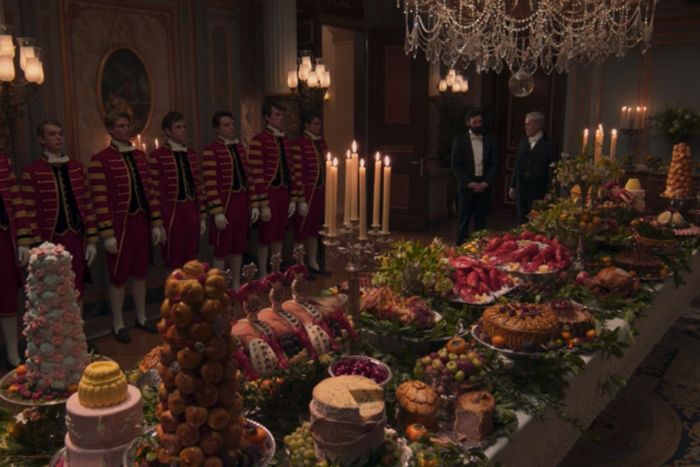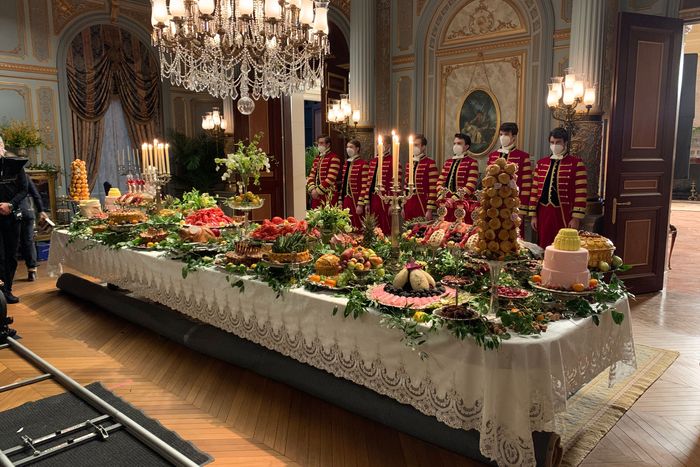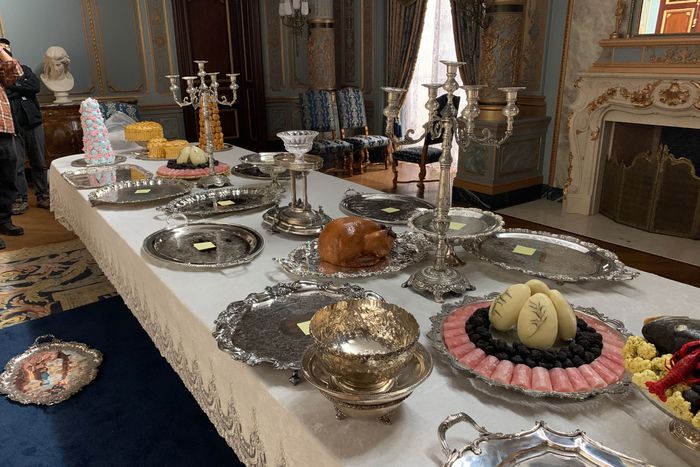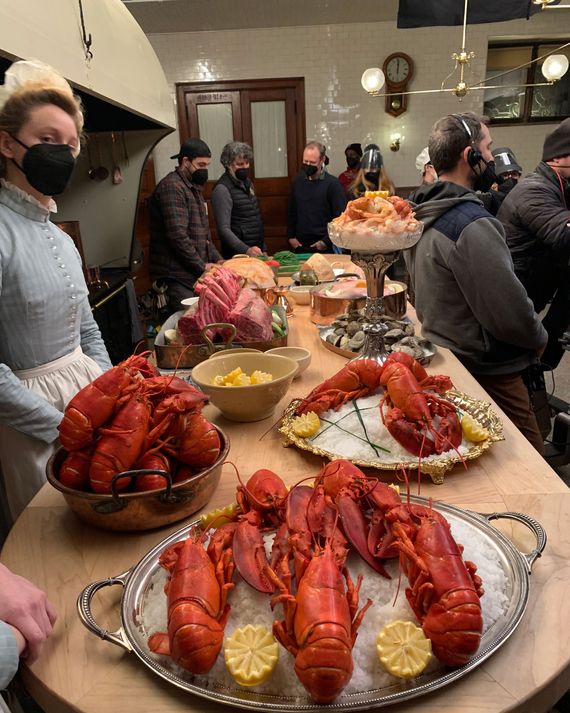
If you’re going to try to break into 19th-century Upper East Side society, you’ll have to throw a lot of parties, and those parties will have to involve a lot of feasts. Such is the toil of Carrie Coon’s Bertha Russell, a new-money interloper trying to make her mark in HBO’s The Gilded Age. As of the show’s pilot, Bertha hasn’t had much success; when she invites pretty much every fancy person in town to her palatial new home, almost all of them snub her. It’s a pity because she had her staff prepare mounds and mounds of lobster and croquembouche for the evening, most of which goes uneaten and is sent off to charities. Given the decadence of the spread on display, we simply had to reach out to HBO to learn more about how The Gilded Age’s feasts come together. Luckily, prop master Michael Jortner and food stylist Colin Flynn had some answers. For one, those are all real lobsters. “We had 50 or 60 lobsters at one point,” Jortner said. “At least!” Flynn added.
To plan each of the show’s spreads, Jortner and Flynn met with the directors to discuss the action, the time of day, and the season when each scene in a dining room or in the kitchen would take place. Then they researched what might have been served in those instances in a typical upper-crust New York City household at the time. They consulted a historical menu database at the New York Public Library as well as references like a cookbook by Charles Ranhofer, a chef at the most popular New York restaurant of the era, Delmonico’s, and etiquette books that would inform the specifics of table setting. As Flynn pointed out, the food trends of the time didn’t move as quickly as they do now, so there would be some similarities between what many of the characters ate (including a lot of jellied aspic concoctions that are less popular today). But there are notable differences between the new-money Russells, who brag about having a trendy French chef, and the old-money van Rhijns. “The van Rhijin meals tend to be more conservative and traditional looking in their presentation,” Jortner said. “The Russell meals tend to be more extravagant and presented in a way that shows more of the opulence.”
Speaking of that opulence, Jortner and Flynn designed Bertha’s episode-one spread by first measuring the size of her table and, from there, calculating the number of dishes they would need to fully cover it. “We wanted to create a mountain of food,” Jortner said. “I remember walking around with Colin and putting everything where it was. We just kept going along the table until we filled it.” The dishes are a mix of real food (most of it, including the meats and kidneys) and fake (the spears that go into the gigantic slab of salmon; some of the meat pies, which were actually filled with asparagus; and a few inedible cakes at the end of the table). Once they had the full spread, they capped it off with sprigs of leaves and garlands of fruit.
The Gilded Age filmed many of its mansion interiors inside actual gilded-age residences in Newport, Rhode Island, so Flynn did much of the show’s cooking there. (He got very familiar with Rhode Island’s fishmongers in the process. “Anthony’s Seafood in Newport was very good to us,” Flynn said.) He led a “skeleton cookery crew” of eight people in the prop department, who cooked the items they needed in a kitchen off the main set. “Colin was physically doing the cooking and setting the platters,” Jortner said, “and we would set the table and the sideboard and reset everything for the scenes — filling glasses and changing silverware out.”
When they weren’t making food for the dining-room scenes, they had to set up the downstairs sequences, where the staff prepares the meals. The set used for the kitchen in the Russell household (inside the mansion known as the Elms) wasn’t functional, so they would bring in whatever dishes were needed for each scene, then place them in the ovens or on stoves to create the appearance of the cooking process. That involved stocking up on a lot of raw ingredients because if you’re watching an actor chop vegetables, you don’t know how many takes they will go through. “They could go through very little or all of it,” Jortner said. Since the characters are supposed to be skilled chefs, Flynn advised them on basic cooking techniques that would seem believable. “There were things like handling dough and how to hold a knife and comport yourself in a kitchen,” Flynn said.
If the actors weren’t pretending to cook on camera, they were eating — and, according to Flynn and Jortner, enjoying themselves. “There was so much consumption on-camera,” Jortner said, “and so many people wanted to take things home afterwards.” The props team made modifications based on dietary restrictions for the actors who needed to be filmed eating, and mostly found they really liked the food. “Beef Wellington was a hit, and people always love dessert,” Flynn said. “There was definitely a lot of cheese that people wanted. There was a huge amount of Stilton consumed.”





